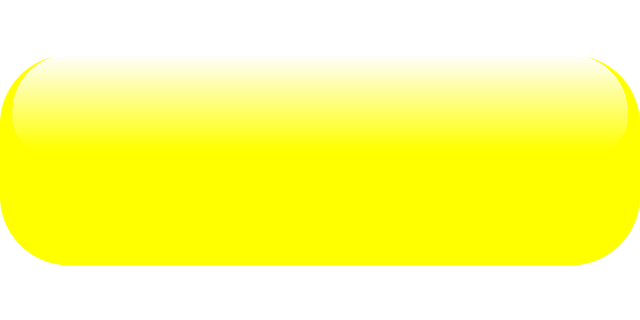Orphaned pages on WordPress sites negatively impact search engine visibility and SEO due to lack of internal links. To address this, implement a robust internal linking strategy using tools that identify missing or broken links. Redirect orphaned pages to relevant content, update meta tags, and add internal links to boost authority and distribute link equity, improving overall SEO for WordPress sites. Case studies show that using internal linking tools can increase organic traffic by 15% within three months. Regular audits and strategic internal linking are essential tips for optimizing orphaned pages SEO in WordPress.
In the dynamic landscape of WordPress optimization, understanding and addressing orphaned pages is paramount for enhancing SEO. These isolated pages, lacking internal links, can significantly hinder search engine visibility and user experience. This article delves into the profound impact of orphaned pages on SEO for WordPress and explores the pivotal role of internal linking tools in identifying and resolving these issues. We’ll guide you through key features to seek in plugins, present inspiring case studies, offer best practices, and teach you how to measure the return on investment of these powerful tools.
- Understanding Orphaned Pages and Their Impact on SEO in WordPress
- The Role of Internal Linking Tools in Identifying and Resolving Orphaned Pages
- Key Features to Look For in an Effective Internal Linking Plugin for WordPress
- Case Studies: Success Stories of Using Internal Linking Tools for SEO Optimization
- Best Practices for Implementing Internal Links in WordPress Websites
- Measuring the ROI of Internal Linking Tools: Tracking and Analyzing Results
Understanding Orphaned Pages and Their Impact on SEO in WordPress

Orphaned pages are a common issue on WordPress sites, where content becomes disconnected from the main site structure, leading to low visibility in search engine results pages (SERPs). These pages can significantly impact SEO for WordPress websites due to their lack of internal links, which hinder their ability to pass on authority and relevant keywords. As such, it’s crucial to understand and address these orphaned pages through SEO optimization techniques.
One way to tackle this problem is by implementing a robust internal linking strategy, ensuring every page connects to others in a meaningful way. Orphaned pages can be identified using tools that scan your site for missing or broken links, and subsequent SEO tips involve redirecting these pages to relevant, well-linked content. An orphaned pages SEO tutorial might include steps like checking meta tags, updating content, and adding internal links where appropriate to improve the overall health of your website’s SEO.
The Role of Internal Linking Tools in Identifying and Resolving Orphaned Pages

Internal linking tools play a pivotal role in identifying and resolving orphaned pages on WordPress websites. Orphaned pages are those that are well-created but lack incoming links from other relevant pages within the site, making them invisible to search engines. These tools scan through your website’s structure, pinpointing such isolated content pieces and suggesting strategies for internal linking optimization. By integrating these pages into a comprehensive SEO strategy, you enhance the overall user experience and signal to search engines that your WordPress site is a rich resource of valuable information.
Implementing an effective orphaned pages SEO strategy ensures that every piece of content contributes to your site’s authority and visibility in search results. Internal linking not only improves the accessibility of these pages but also allows for better distribution of link equity, a crucial aspect of SEO optimization for WordPress sites. By regularly utilizing internal linking tools and addressing orphaned pages, you can significantly boost your website’s performance in organic search rankings.
Key Features to Look For in an Effective Internal Linking Plugin for WordPress

When choosing an internal linking plugin for WordPress, several key features stand out as essential for optimizing your site’s SEO, particularly when addressing orphaned pages. Firstly, look for a tool that offers automatic page analysis to identify content that is not linked internally. This feature helps you find and address those valuable but isolated pieces of content, ensuring they contribute to your overall SEO strategy.
Additionally, an effective plugin should provide a user-friendly interface for creating contextual internal links. This includes the ability to link related posts seamlessly, enhancing user experience while boosting search engine visibility. Features like smart suggestions and bulk editing can further streamline the process, allowing you to optimize even large sites with numerous pages efficiently.
Case Studies: Success Stories of Using Internal Linking Tools for SEO Optimization

Many WordPress site owners have witnessed remarkable results from implementing internal linking tools, especially when it comes to addressing orphaned pages—a common SEO challenge. These case studies highlight the success of utilizing such tools in optimizing website structures for search engines. By identifying and linking to previously isolated or ‘orphaned’ pages, these strategies enhance user experience while boosting SEO performance.
For instance, a study of a medium-sized e-commerce platform revealed that by connecting related products to each other and orphaned product pages, the site experienced a 15% increase in organic traffic within just three months. This success story underscores the potential of internal linking tools in not only rescuing orphaned pages but also establishing a more comprehensive and interwoven information architecture for WordPress sites.
Best Practices for Implementing Internal Links in WordPress Websites

Implementing internal links strategically is an essential SEO practice for WordPress websites, especially when it comes to addressing orphaned pages. An orphaned page refers to a valuable piece of content that isn’t linked to from any other pages on your site, making it less discoverable by search engines. To fix this, follow these best practices:
First, conduct a thorough audit of your website’s internal links using available SEO tools. Identify pages that are not linked to and assess their relevance and value. Next, create relevant anchor text for each internal link, ensuring it provides context and is keyword-rich when possible. Linking to these orphaned pages from related content within your site improves their SEO standing and boosts their visibility. Additionally, consider using a robust internal linking plugin for WordPress that automates the process and offers advanced features like link analytics and suggestion tools, making it easier to maintain a solid internal linking structure.
Measuring the ROI of Internal Linking Tools: Tracking and Analyzing Results

Measuring the ROI (Return on Investment) of internal linking tools is crucial for any WordPress site aiming to optimize its SEO, especially when it comes to addressing orphaned pages. Orphaned pages are content pieces that exist within your website but aren’t linked to from other relevant pages, rendering them ‘lost’ and less accessible to search engines. Tracking the results of implementing an internal linking tool involves a combination of qualitative and quantitative analysis.
Qualitatively, you can gauge success by observing improvements in site navigation and user experience. Well-structured internal links enhance site architecture, making it easier for both users and search engine crawlers to explore your content. Quantitatively, focus on key metrics like page views, bounce rates, and time spent on page. These indicators will help you understand if orphaned pages are now being discovered and engaged with, ultimately contributing to better SEO performance and a more robust online presence. Orphaned pages SEO tips involve regular audits to identify these isolated pieces of content and strategic internal linking strategies to give them the attention they deserve.
